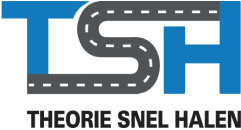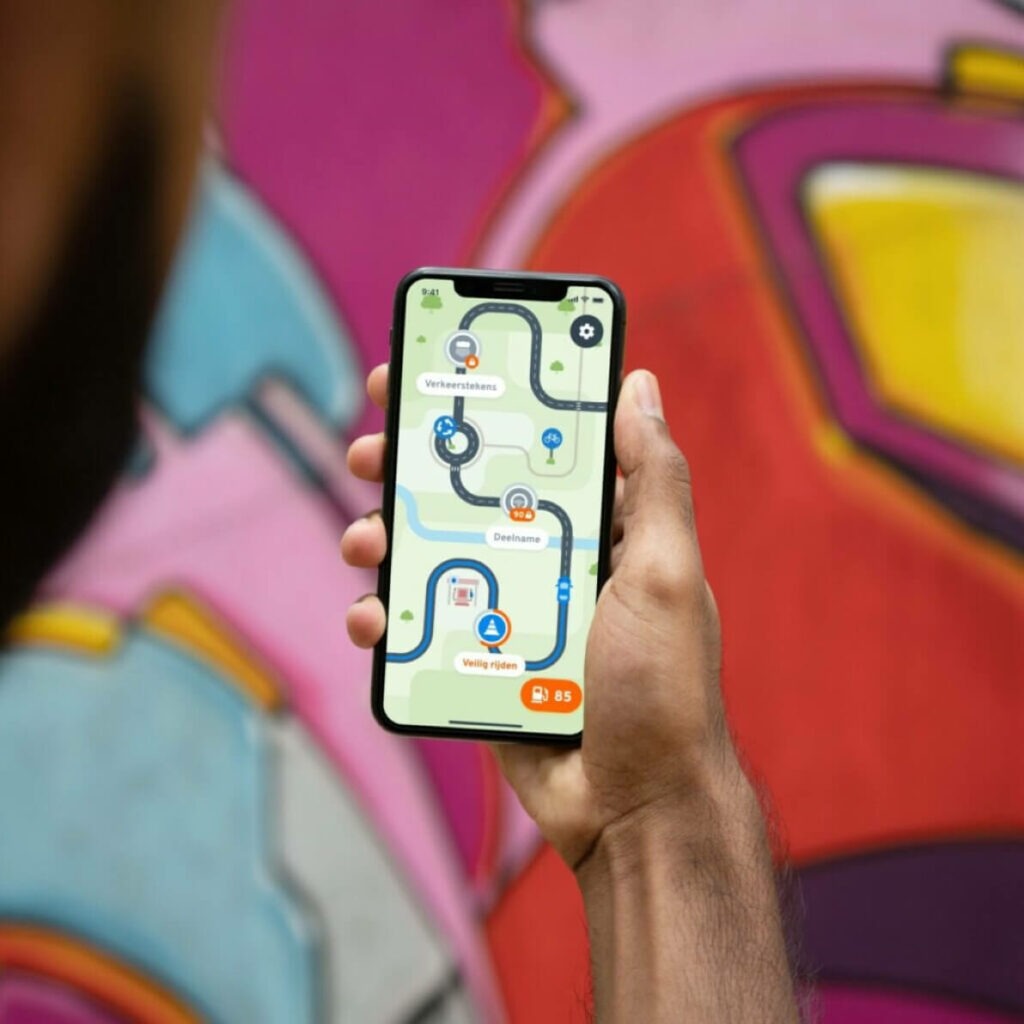Improvement of driving education
One of the major changes is the mandatory requirement to attend driving lessons; currently, only taking the exam is required. Moreover, it will become clearer for everyone what is expected of students to obtain their driver’s license. Learning objectives were established in October 2023, which will be further developed by this summer.
In these learning objectives, you can expect requirements such as driving at night, reaching speeds of 130 km/h, and discussing ‘social driving behavior’ during lessons. These changes aim to ensure that everyone enters the exam well-prepared.
Plans have also been made regarding the structure of this ‘new driving education’ and the involvement of various parties. The driving education will be divided into four phases, with each phase incorporating progressively challenging traffic situations.
Additionally, a system is being developed to track the skills mastered by the student for everyone involved. The involved parties include the students themselves, their parents, or the driving instructors. Driving instructors still retain the freedom to use their own teaching methods, allowing them to differentiate themselves based on their unique skills, knowledge, and experience.
Improvement of the exam
Currently, the exam is at the core of the driver’s license process. In the future, however, the driving education itself, and thus the curriculum, will take the lead role. The exam will then be aligned with this curriculum.
No decision has been made yet regarding potential changes in the number of mandatory exams. For now, the current system, where you take one theory exam and one practical exam, will remain in place. One consideration is that additional exams entail extra costs for the students. Later this year, advice will be issued by the Ministry, IBKI, CBR, and the industry on this matter.
Improvement of driving instructors
Currently, only one exam is mandatory for driving instructors. Under the new laws and regulations, future driving instructors will be required to undergo training at an institute recognized by IBKI. IBKI has established guidelines for this training, allowing institutes the freedom to develop their own teaching methods within these frameworks.
Additionally, driving instructors are still required to renew their credentials every 5 years, but these requirements are also becoming stricter. IBKI will now conduct both theoretical and practical exams every 5 years. If an instructor fails three times, they will lose their credentials. At that point, the instructor may opt to undergo a re-entry training program.
The reason behind the new measures is the various irregularities in the driving school sector and the low passing rates. Currently, only 52 percent pass the practical exam on their first attempt, and just 39 percent pass the theory exam. Minister Harbers announced that the new approach is also aimed at reducing traffic accidents. CBR-director Alexander Pechtold anticipates that these measures will promote fairer competition among driving schools and enhance the quality of driving lessons, ultimately assisting young people in obtaining their driver’s licenses more quickly.
As a theory school, we fully support these changes because they not only result in higher passing rates but also enhance traffic safety. Our ultimate goal is to ensure that everyone can drive safely and responsibly. And additionally, if these changes like they predict also happen to have a positive impact on your wallet, well that’s just an added bonus!
How do these changes impact you?
The new rules ensure you’re better prepared for the road. With clear learning objectives and improved guidance from instructors, you’re more likely to pass on your first attempt. This saves you time, money, and stress. Prepare well, choose a reputable driving school, and hit the road with confidence. Best of luck with your driving education and safe travels!
Still aiming for your license? Enroll in our dynamic theory course, designed to not only prepare you for success in your exams but also to build your confidence behind the wheel. Don’t miss out on this opportunity to gain essential knowledge and skills while enjoying a fulfilling learning experience. Sign up now and start your journey towards becoming a skilled and confident driver! 🚗💨
1 Book your exam in advance: Once you book the exam, you’ll have a clear idea of how much time you have to prepare. This helps you set realistic goals and effectively manage your study time.
2 Start studying early: It’s important to start studying well in advance so you have enough time to understand and practice all the topics.
3 Practice with mock exams: Do as many mock exams as possible to get familiar with the question format and exam structure. This also helps improve your time management.
4 Learn traffic rules and signs: Pay special attention to traffic rules and signs, as they make up a large part of the exam. Make sure you understand and can apply them.
5 Focus on understanding rather than memorization: Try to understand the concepts and principles behind traffic rules rather than just memorizing them. This helps you apply the rules in different situations.
6 Address weaknesses: Identify the topics you struggle with and spend extra time understanding and practicing them. Don’t just focus on the topics you already know well.
7 Take enough breaks: Take regular breaks during study sessions to keep your mind fresh and prevent fatigue. Taking short breaks also helps you process information better.
8 Simulate exam conditions: Practice under conditions similar to the real exam, such as practicing with a time limit and in a quiet environment without distractions.
9 Stay calm on exam day: Make sure you’re well-rested and arrive on time for the exam. Try to stay calm and trust the knowledge you’ve gained during your preparation.
10 Read questions carefully: Take the time to carefully read each question and consider all choices before answering. Sometimes questions may seem similar, but the answers are subtly different.
By following these tips and consistently practicing, you’ll increase your chances of success on the CBR theory exam. Here’s to seeing that green thumbs-up on your screen! Good luck!
Comparing driving schools
Compare different driving schools to find the one that best suits you. An important aspect to consider is the passing rate of the driving school. A passing rate of over 50% indicates that many students pass their driving exam on the first attempt. Do you want to compare driving schools and make an informed choice? Then make use of the CBR’s Driving School Finder. Here you will find clear overviews of the passing rates of all driving schools in your area, as well as their contact information and website for more information about the lessons offered.
Various teaching methods
The teaching method should also suit you well. Driving schools can offer different packages, for example, including theory lessons or, conversely, individual driving lessons, with or without intermediate tests. Offering a specific method is not necessarily better than another, but it should align with your needs.
A lesson package does not guarantee that no extra lessons will be necessary. Generally, you need about 42 hours of driving lessons to obtain your driver’s license, which is more than what most lesson packages offer. A package with driving lessons may be more cost-effective than individual lessons, but it’s important to understand exactly what is included in the package. Therefore, make sure to clarify all terms with the driving school in advance to avoid surprises regarding the package price.
Consult others for advice
Driving lessons are personal. Everyone has different needs, and both the driving school and the instructor should align well with your preferences. Therefore, it’s wise to inquire about the experiences of others. It’s valuable to hear from friends or acquaintances where they took driving lessons and what their experiences were. This can help you make an informed decision.
How do you recognize a good driving school?
Below are some characteristics that indicate a driving school is good.
- The driving school has a high passing rate. Use the CBR’s Driving School Finder to check the passing rate of the driving school.
- The driving school uses a lesson card, which clearly shows your progress in your training.
- Explanations are provided about the benefits of taking an interim test at the CBR.
- You are only sent for the exam when you can drive safely and independently.
- Your instructor accompanies you during the interim test, so they can better support you in the continuation of your driving education.
- The driving school only employs instructors who are legally authorized to give driving lessons, which is indicated by their WRM authorization card.
- Always check if the name of the driving school matches the name on the car and the name under which the driving school is registered with the CBR. This prevents surprises during the exam, as the CBR requires and verifies this.
- Clear agreements are made in case of a cancellation.
As a theory school, we closely collaborate with various driving schools in Amsterdam and surrounding areas. Have you already attended a theory course with us or are you considering attending one, but have not yet found a driving school? Let us know, and we would be happy to assist you in finding a suitable driving school.
What does the car theory exam look like?
The CBR car theory exam consists of three different parts: hazard perception, knowledge, and insight. To pass, you must pass each of these sections separately, and within each part, you are allowed to make a limited number of mistakes.
The first part, called “Hazard Perception,” consists of a total of 25 questions. To pass this part, you must answer at least 13 questions correctly. This means you can make a maximum of 12 mistakes.
The second part, “Knowledge,” comprises a total of 12 questions. If you answer at least 10 questions correctly, you demonstrate that you are a true expert on the road. In this part, you are allowed a maximum of 2 mistakes.
The third and final part is “Insight.” Here, you will be presented with a whopping 28 questions. To pass this part, you must answer at least 25 questions correctly and demonstrate your understanding of traffic situations. You are allowed a maximum of 3 mistakes here.
So, you can make a total of 17 mistakes, but these are specifically tied to each of the sections.
Would you like to practice with some CBR exam questions in advance?
Then quickly check out our pre-course video about intersections. Our experienced instructor Kris discusses and explains a variety of CBR questions regarding intersections.
Looking for even more CBR practice questions for the car theory exam?
Then sign up here for one of our English theory courses at our location where you’ll do plenty of practice exams guided by the best instructors around.
When it comes to driving in the Netherlands new residents can retain the use of their foreign driving license for a specific period after their arrival. The length of license validity can vary widely, ranging from six months to 15 years depending on the country and date of issue. To determine the applicable period for you, continue reading.
How long can I use my foreign driver’s license in the Netherlands?
If you’re planning to reside in the Netherlands and possess a foreign driving license, you can continue to utilize it for a period. The duration varies based on the country of issuance for your driving license and when you obtained your license.
License form the EU or EFTA
Residents of the Netherlands with a driving license in the category A(motor or moped) and B(car) issued by the European Union (EU) countries or the European Free Trade Association (EFTA) countries are allowed to drive with it in the Netherlands for 15 years from the date of issue of the foreign driving license. There is one conditions though your foreign license must still be valid.
If your driving license was issued over 15 years ago but has not yet expired, you can still use it for 2 years from the date you moved to the Netherlands.
Once the period that you are allowed to use your license has passed(so either after the 15 or 2 years), you are required to obtain a Dutch driving license. This means you will have to exchange your foreign driving license for a Dutch one. It is very important to apply for the change in time because if you have not exchanged it before the period of 15 or 2 years has passed you will no longer be permitted to drive, even if you have already applied for the exchange. Visit the RDW website for information on how to exchange your license.
License from other countries
If you possess a valid driving license but it was not issued by a EU or EFTA country, you may only utilize it for up to 185 days after relocating to the Netherlands. After this period you will need to pass both the theory and practical exams administered by CBR and obtain a Dutch license.
There are some exceptions to these rules. Certain non EU or EFTA countries have special agreements with the Netherlands for license exchange. The license from these countries may be exchanged for a Dutch license but only if they are still valid and in the mentioned categories.
Below we have listed the countries that have special agreements with the Netherlands for license exchange.
- Andorra – passenger car – Dutch driving licence category B
- Canadian province Québec – Class 5 – Dutch driving licence category B
- Israël – B – passenger car – Dutch driving licence category B
- Japan IB – passenger car en motorcycle with more than 400 cm³ – Dutch driving licence categories A and B
- Singapore – Class 2 – motorcycle with more than 400 cm³ and Class 3 – passenger car – Dutch driving licence categories A and B
- Taiwan – B – passenger car – Dutch driving licence category B
30% Tax Ruling
Another exception is the 30% ruling. If you are working in the Netherlands as a highly skilled migrant and eligible for the 30% tax ruling you have the option to exchange your driving license from any country. Note that this again is only an option if your foreign driving license is still valid. To exchange your license you must possess a valid Proof of Approval (‘Beschikking Bewijsregel’) from the Dutch tax authorities. Together with your employer you can apply for the Proof of Approval.
So in short there are numerous rules and regulations to bear in mind when driving in the Netherlands with a foreign license. Aside from your license being valid or eligible for exchange the most important thing always is that you are safe on the road. In certain instances, familiarizing yourself with Dutch traffic regulations may be advisable, even if your license remains valid. If you would like to feel more secure and learn about all about the Dutch traffic regulations you can always register for one of our two day English courses at our location Amsterdam.




